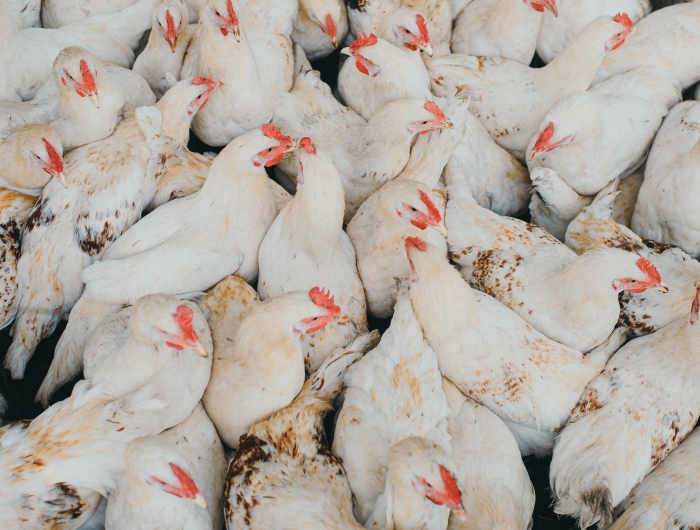USDA’s proposed poultry safety reforms could reduce Salmonella illnesses

Egor Myznik - unsplash.com.
Framework would focus on strains and levels of Salmonella that are most likely to make consumers sick
Despite decades of investment in Salmonella control on the part of the U.S. Department of Agriculture, human rates of Salmonella infection have not declined much in over 20 years—and poultry remains the leading culprit. That’s why the Center for Science in the Public Interest is today filing comments with the USDA applauding the new regulatory framework for controlling Salmonella in poultry that the agency proposed in October.
The regulatory framework announced in October consists of three components to address food safety from farm to fork, all of which are important, according to CSPI. The first requires incoming flocks to be tested for Salmonella before the birds are introduced into slaughter establishments. The second calls for enhanced monitoring procedures in these establishments to ensure that Salmonella is controlled throughout a company’s operations. The third, and most important in CSPI’s view, is the creation of an enforceable final product standard for Salmonella in raw poultry. The standard would allow the agency to stop poultry products known to be dangerously contaminated with certain types or amounts of Salmonella from reaching consumers, which it currently cannot do.
CSPI has urged the USDA to reform its Salmonella program, most recently filing a petition in January of 2021 with other consumer health advocacy groups and victims of foodborne Salmonella illness asking the agency to reform its Salmonella regulations. The petition requested that USDA create final product standards in poultry and better ensure Salmonella control throughout the entire poultry supply chain, starting at the farm. It recommended that the agency focus on those strains of Salmonella that represent the greatest public health burden.
In comments filed today with USDA, CSPI wrote that the agency’s proposed framework, which took the form of a high-level outline rather than a detailed proposed rule, could be consistent with the reforms proposed in the organization’s petition.
“As we have repeatedly emphasized in our advocacy, enforceable final product standards are a critical component of the regulatory system and have the potential to incentivize best practices throughout the production chain,” said the CSPI comment. “A risk-based, enforceable final product standard would better protect consumers by preventing product known to be most dangerously contaminated with Salmonella from reaching store shelves.”
The Coalition for Poultry Safety Reform, a group of consumer advocates, scientists, current and former regulators, and poultry industry members that CSPI helped form, separately offered comments. The diverse Coalition supported USDA's commitment to meaningful reform, reflected by its release of the proposed framework, and emphasized the need for continuous agency engagement with stakeholders throughout the reform process.
“Not all Salmonella is the same, and USDA’s proposed framework can better protect us from the strains and levels of the bacteria that we know are more likely to cause illnesses in humans,” said CSPI food safety campaign manager Dr. James Kincheloe, a veterinarian. “Implementing these poultry safety reforms should, at long last, begin to reduce the illnesses due to infection with Salmonella.”
Contact Info: Jeff Cronin, 202-777-8370 or Lisa Flores, 202-777-8368

